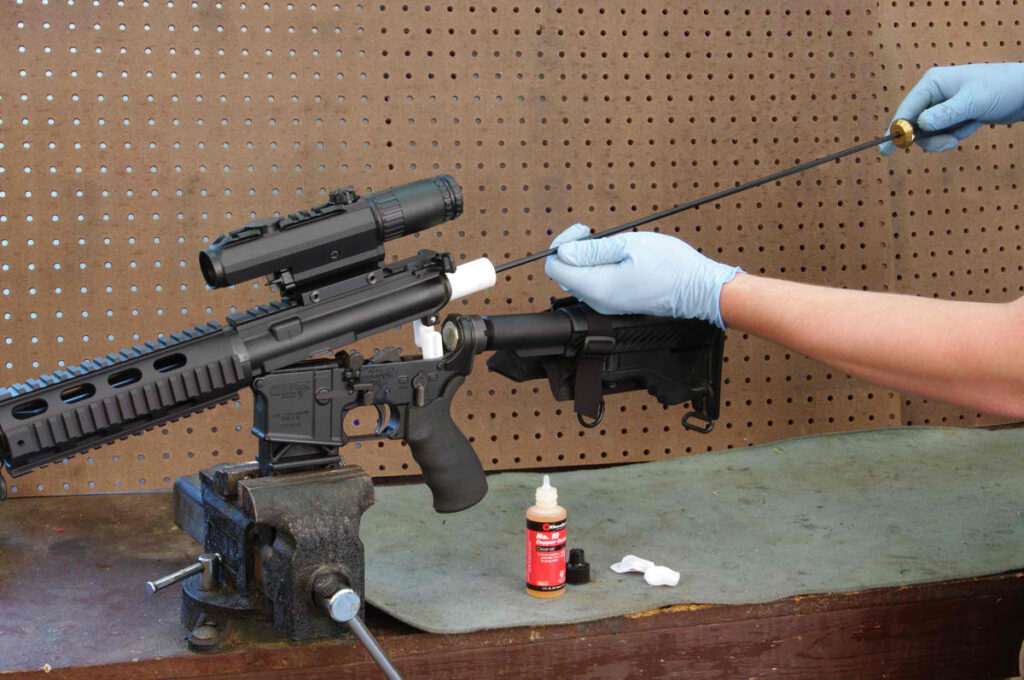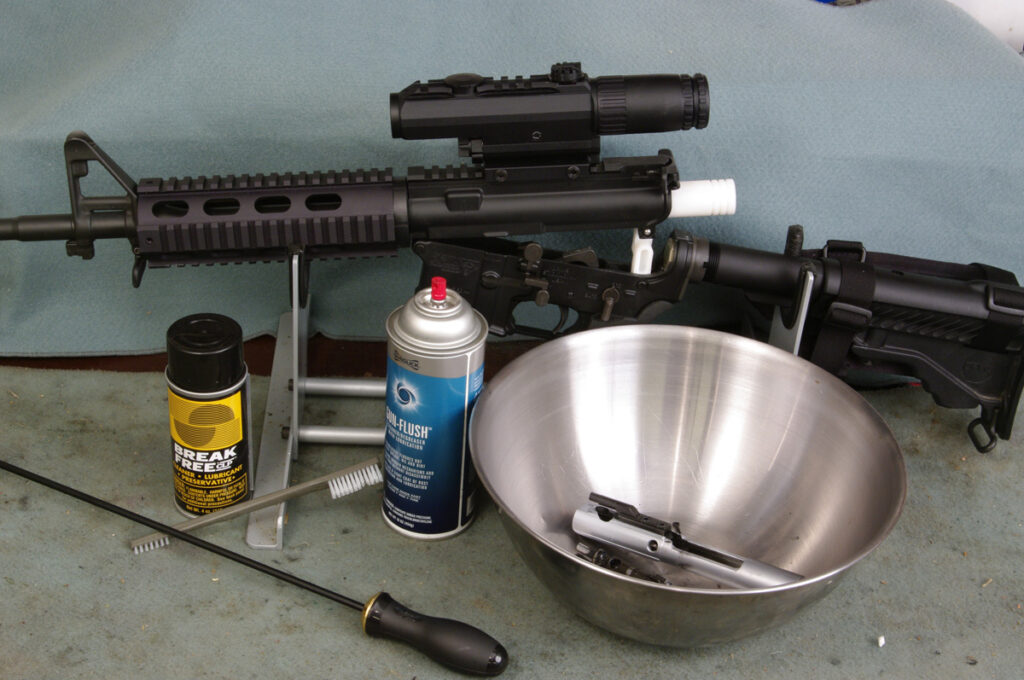Locked and Loaded: How Often Should You Clean An AR-15 – 2024 Guide

Armed forces, law enforcement, and civilian users often use the AR-15 as a staple firearm. The importance of proper cleaning and maintenance of your arms is a necessary stride.
It is advisable for you to clean your AR-15 after a few thousand rounds have been shot through it; moreover, you also want to take good care of such a significant and expensive investment.
Cleaning an AR-15 doesn’t have to be a difficult or lengthy task. It could be accomplished rather fast and is a reasonably straightforward task. Understanding the significance of basic maintenance is essential for responsible gun owners who want to keep their weapons reliable and durable.
Finding the right balance between excessive cleaning and carelessness necessitates a thorough knowledge of the weapon’s function, the surrounding environment, and individual usage habits.
Types of AR-15 variants
It’s crucial to understand the distinctions between the two AR-15 variants. There are two types of systems: direct impingement and piston-operated.
The direct impingement system is the most popular platform for the AR-15 that is currently on the market. The bulk of gasses and the bolt in this system escape through the barrel when the trigger is pushed while the bolt is in the forward lock position.
There is a gas lock that ascends and returns to the action region inside the gas tube.
The bolt carrier can acquire a fresh cartridge and advance once again after being forced backward by the bolts when released.
A piston-operated system, on the other hand, operates differently. This technique uses a piston that gasses push against rather than letting gasses return all the way to the action. The piston drives the bolt backward; as a result, enabling its forward motion and subsequent cycle.
Before Cleaning

It’s crucial to clear the weapon before field stripping or cleaning your AR-15. Therefore, you must ensure that it is locked and entirely emptied. To do so, just follow these three easy steps:
- Take the magazine out
- Retract the bolt
- Be certain that the chamber has been emptied
How Often Should You Clean An AR-15?
Gun enthusiasts pay close attention to one of firearms’ crucial elements: the rifle’s cleaning. This article will use substantial research and industry knowledge to answer this issue and offer graduate-level insight into how frequently an AR-15 should be cleaned.
Understanding The AR-15’s Operational Characteristics
It is critical to completely grasp the AR-15’s operating principles to comprehend its cleaning requirements. The operation of the AR-15 is facilitated by controlled gas impingement, which includes the cycling of high-pressure gasses.
This configuration makes the AR-15 susceptible to carbon residue and fouling buildup.
Effects Of Dirt Buildup
The accumulation of fouling and carbon impacts the reliability, precision, and durability of the AR-15. A buildup of too great filth might cause malfunctions, missed shots, lower accuracy, and quicker wear on vital parts.
Additionally, it may affect how well the weapon cycles, creating possible safety risks.
Evaluating The Use Of Context

Analyzing the usage scenario is necessary to decide how frequently an AR-15 should be cleaned. The amount of dirt on the weapon might vary depending on a number of circumstances, including the shooting location, ammunition type, number of rounds, and individual firing postures.
Identifying use patterns in these areas is crucial to develop an effective cleaning program for AR-15 rifles.
Recommendations From Professionals
Experts and gun makers frequently provide recommendations for how often to clean AR-15s. These suggestions generally vary from routine thorough maintenance after a certain number of rounds to more thorough cleaning following each shooting session.
To choose the best cleaning frequency, consider personal tastes and the agreement among these sources.
Individual Preference And Experience
Personal experience frequently plays a vital part in deciding cleaning frequency, even though professional suggestions and rules are necessary.
Gun owners can create a customized cleaning schedule by regularly evaluating the weapon’s performance and looking for indications of fouling, lower accuracy, or dependability problems.
Considerations For Frequency
The frequency estimate must consider elements like the surrounding circumstances, the kind of ammunition, the possibility of corrosion substances, and the anticipated use of the AR-15.
For instance, frequent cleaning may be necessary for users in dusty or humid surroundings, whereas infrequent handgun use may call for less frequent cleaning but a stricter approach when done.
Maintenance Tools And Methods

The efficacy of AR-15 maintenance may vary according to the cleaning agents, equipment, and methods used. Graduates who want to ensure maximum cleanliness and corrosion prevention should think about spending money on high-quality cleaning agents, lubricants, brushes, and equipment.
Learning the right cleaning techniques, disassembly, and reassembly is essential for a cleaning regimen to be effective.
Regular inspection, the use of top-notch cleaning agents, and the adoption of best practices help the AR-15 retain top performance and durability throughout its operating life.
Keeping A Log And Monitoring Usage
Tracking trends and patterns over time may be made easier by keeping a diary of firearm usage, cleaning frequency, detailed notes on performance, and related observations.
This record may be used to optimize one’s cleaning routine by offering evidence-based insights on how frequently an individual’s AR-15 has to be cleaned.
Maintenance And Gun Use In Balance
Excessive cleaning may do more damage than good because it increases component wear. Therefore, it’s important to balance consumption and cleaning frequency.
The integrity of the AR-15 may be maintained with regular inspection, proper cleaning, and lubrication, with minimal wear and strain.
Conclusion

Examining several variables, including operational principles, usage environment, expert suggestions, personal experience, and preference, is necessary to determine the optimal cleaning frequency for your AR-15 rifle.
Given that an AR-15 is an expensive investment, it is essential to regularly clean it using an AR-15 cleaning kit to keep it operating at its best. These cleanings will require a lot more labor, but if you maintain your weapon’s efficiency, you can likely complete them quickly.

